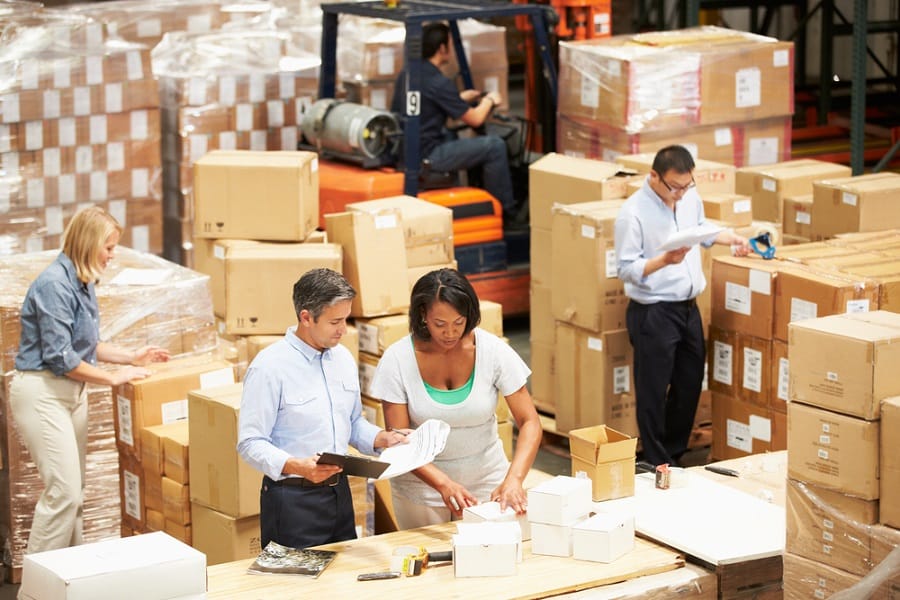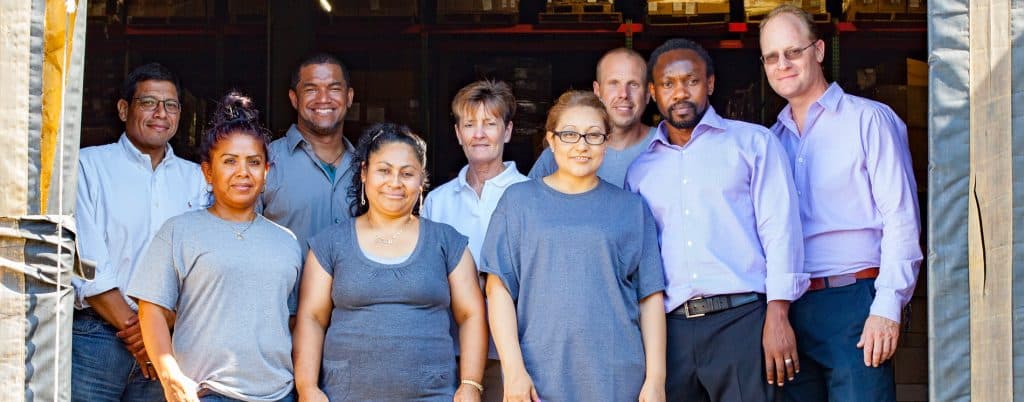Diversity & Inclusion: The Capacity Way
A quick browse around our site is enough to show that the Capacity team is drawn from many different countries and cultures. However, the topic of diversity and inclusion at Capacity runs deeper than a few pictures, which is one of the reasons we held a panel discussion on the subject earlier this year.
Beyond the broad themes of hiring a diverse workforce and bringing everyone into the fold, we wanted to take the time to explain these ideas in the context of Capacity.

How Does Capacity Approach Diversity & Inclusion?
Few people in our organization are better placed to take on this topic than Thom Campbell, our Chief Strategy Officer, who answers some key questions below.
1) Warehouse and fulfillment functions operate primarily behind-the-scenes, out of view from the actual brands in the public eye. Why is it important for service providers like Capacity to works towards diversity and inclusion?
Capacity sees diversity as a core value, not window dressing or political correctness. It’s rooted in some very practical aspects of our life in a warehousing environment, like having a largely bilingual and now multi-lingual team. At first, our business was driven forward by a largely Central and South American labor force. More recently, our workforce expanded to be truly global. We now have extensive representation from Africa, Europe, and Asia, as well as the Americas.
One of the holiday traditions we embrace is two companywide events, at which everyone enjoys a communal meal and time together. During the winter version, CEO Jeff Kaiden will often invite team members to participate in one of his ad hoc quizzes regarding where they are from. As you can imagine, the answers span the globe!
This diversity has always been part of our DNA - a fundamental part of what makes Capacity special - and we have sought to use it to our advantage.
2) What benefits does a more diverse fulfillment workforce deliver for client brands?
Diversity can be a superficial construct, but true diversity of mindset is how we forge some of our most exciting engineering and technology solutions. These varied perspectives often go hand-in-hand with more established measures of diversity.
In the same breath, conscious inclusion is how we get the best that everyone has to offer. Viewed in this way, it’s a form of enlightened self-interest: it makes us better and it’s always a plus to be improving results while doing the right thing.

3) What steps has Capacity taken to hire more broadly and diversify its team, especially in senior positions?
Interestingly, our greatest success in broadening leadership has come from within. Three of our Director-level managers were promoted internally, and two are women, one a woman of color.
We admittedly have greater challenges at the VP level. Nonetheless, every time we go to market we prioritize hiring for diversity. It does not always work out, and we do need to fill roles.
This is one of the frustrations that led to Capacity hosting the event at the Ace Hotel (video below). We wanted to hear from a truly diverse group of subject matter experts, with the aim of placing diversity and inclusiveness at the forefront of our thinking, internally and externally.
We are fully committed to continuing our movement in the direction we believe is right for both our company and society as a whole.
4) Can you point to any practical actions or initiatives that have already worked to broaden diversity and inclusion within Capacity?
We have adopted established best practices and practical incentives that lead to diverse hiring.
For example, we offer monetary incentives for employees who refer successful hires. Because our existing employee population is so diverse and our bi-coastal locations being the very essence of the melting pot analogy, that creates a virtuous cycle. Welcome to New Jersey and California!
We also believe our focus on promoting from within has a similar virtuous cycle whereby the already varied workforce from which we’re pulling will drive similar diversity at senior levels.
5) What are some of the potential barriers to diversity that you would advise other leaders to watch for?
When we started Capacity, it was three nice Jewish guys and a WASP, all from the New York Area. It sounds like the beginning to a ‘walked into a bar’ joke, but this was the cultural base from which we built the company.
We’re all very proud of our heritage, but we’ll always be who we are. Genetics, much like gravity, is not just a good idea, it’s the law.
This same dynamic exists in many other founder-owned and operated concerns. You will have an existing bias at the senior level towards any concentration or lack of diversity in your founders.
Some strategies to help address that bias include:
- Mindfulness: Be aware of bias as you build. Challenge yourselves - and your HR team or recruiters - to always see value in and hire for diversity. In itself, inclusiveness is a way to cultivate mindfulness around internal biases and curb them where possible.
- Create an Action Plan: Awareness must be followed by action. Come up with concrete, measurable initiatives that promote internal inclusion and identify culturally diverse candidates externally.
- Internal Mobility: Encourage movement among departments. This need not be explicitly about diversity, but dynamic teams with multiple perspectives tend to foster it. Mobility tends to ‘stir the pot’ of diversity.
When I grew up in New York City I always heard people refer to it as the aforementioned melting pot. Those were tough times in the city’s history, and I always thought of it more as seething pot. That has changed, although there are increasing concerns like income inequality and other socio-economic pressures.
In order to foster the melting together of diverse groups, you need to push them together and mix them up over time.
If you see problems with different groups interacting, and you will, step in firmly. Let it be known it’s not acceptable within your organization to allow personal prejudice to inform interaction with colleagues.
A good practical example is that while we used to have mostly Latin American warehouse associates, we now have a truly global mix.
Initially there was some resistance and friction. In particular, the legacy associates had some issues integrating with a new crew which included many Africans. Over time those who could not adapt had to move on and the organic process of promoting from within means we have a range of supervisors who are originally Latin American, African, African American, American the broadest possible range.
It’s not always sunshine and roses, but if you embrace the challenge and gently push your people to adopt the same approach, you’ll see remarkable transformations over time. Be sure to keep your leadership team involved, explicitly promoting positive behavior around issues of diversity and inclusion.
It's important to recognize that you will almost never see the worst behaviors, and be willing to step in whenever there is a hint of an issue and nip it in the bud. Be a realist and an activist for diversity with an idealistic underpinning. You’ll get there over time. Learn more about the culture at Capacity here.